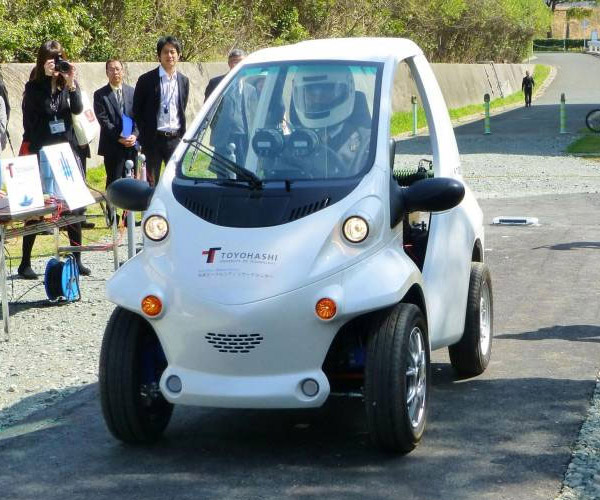

In theory, an electric vehicle is a great thing with no need for fuel or oil changes, and producing no pollution from an exhaust pipe. The reality is that EVs simply don’t work for many drivers due to short driving ranges, and the lack of a good charging infrastructure outside most major cities. A new experimental EV created in Japan by Toyohashi University of Technology and Taisei Corp was unveiled recently and it has no battery inside at all.
The size of the battery normally controls how far the car can drive on a charge. Rather than storing power itself, this EV gets the power it needs from steel wires embedded in the tires that provide a conduit from power sources in the road surface to the electric motors of the car. In other words, it works sort of like a trolley or a subway car.
The upside is that the car never needs charging, but the catch with this design is that it is capable of running only on electrified roads. Cities and states would have to redo road surfaces and embed them with appropriate tech if this sort of EV is to ever take off, which make it even less likely to go mainstream than today’s EVs.
In theory, an electric vehicle is a great thing with no need for fuel or oil changes, and producing no pollution from an exhaust pipe. The reality is that EVs simply don’t work for many drivers due to short driving ranges, and the lack of a good charging infrastructure outside most major cities. A new experimental EV created in Japan by Toyohashi University of Technology and Taisei Corp was unveiled recently and it has no battery inside at all.
The size of the battery normally controls how far the car can drive on a charge. Rather than storing power itself, this EV gets the power it needs from steel wires embedded in the tires that provide a conduit from power sources in the road surface to the electric motors of the car. In other words, it works sort of like a trolley or a subway car.
The upside is that the car never needs charging, but the catch with this design is that it is capable of running only on electrified roads. Cities and states would have to redo road surfaces and embed them with appropriate tech if this sort of EV is to ever take off, which make it even less likely to go mainstream than today’s EVs.
Source:: 95 Octane